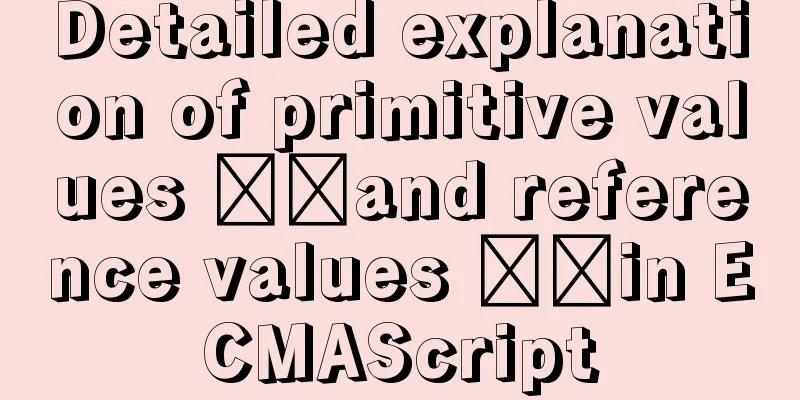Tomcat parses XML and creates objects through reflection

|
The following example code introduces the principles of Tomcat parsing XML and creating objects through reflection. The specific code is as follows:
import java.lang.reflect.InvocationTargetException;
import java.lang.reflect.Method;
import java.util.List;
import org.dom4j.Document;
import org.dom4j.DocumentException;
import org.dom4j.Element;
import org.dom4j.io.SAXReader;
public class ServerReadXML1 {
public static void main(String[] args)
throws DocumentException, ClassNotFoundException, InstantiationException, IllegalAccessException,
NoSuchMethodException, SecurityException, IllegalArgumentException, InvocationTargetException {
// Now if you enter a Servlet url-pattern in the browser
String urlPattern = "/first";
// Get the class name according to urlPattern String className = getClassByUrl(urlPattern);
// Get the Class object based on the full class name Class clazz = Class.forName(className);
// Create the specified object by reflecting the clazz object Object obj = clazz.newInstance();
// Get the service method Method method = clazz.getDeclaredMethod("service");
// Get permissions method.setAccessible(true);
// Execute the service method method.invoke(obj);
}
private static String getClassByUrl(String urlPattern) throws DocumentException {
// 1. Create a SAXReader object SAXReader reader = new SAXReader();
// 2. Read the file Document document = reader.read(ServerReadXML1.class.getClassLoader().getResourceAsStream("web.xml"));
// 3. Get the root node Element rootElement = document.getRootElement();
//System.out.println(rootElement.getName());
// 4. Get the child nodes List<Element> under the root node servletList = rootElement.elements();
// Record the content of the servlet-name tag that is the same as urlPattern String servletName = "";
// Record the content of servlet-class in the servlet tag // The content of servletClassName is the full class name of the Servlet String servletClassName = "";
// 5. Traverse child nodes for (Element servletElement : servletList) {
//System.out.println(servletElement.getName());
// If it is a servlet-mapping tag, execute the code if ("servlet-mapping".equals(servletElement.getName())) {
// Get the url-pattern tag object Element url = servletElement.element("url-pattern");
// Check if the content of the tag is the same as the entered urlPattern value if (urlPattern.equals(url.getText())) {
//Record the content of the servlet-name tag that is the same as urlPattern //If they are the same, record ServletName
// Get the content of servelt-name in servlet-mapping servletName = servletElement.element("servlet-name").getText();
}
}
}
// Traverse again for (Element servletElement : servletList) {
// If it is a servlet tag, execute this code if ("servlet".equals(servletElement.getName())) {
// Determine whether the value of servletName obtained in the previous traversal is the same as the content of servlet-name in this traversal if (servletName.equals(servletElement.element("servlet-name").getText())) {
// If the same record servletClassName
servletClassName = servletElement.element("servlet-class").getText();
}
}
}
// Return the full class name of the Servlet servletClassName
return servletClassName;
}
}1. 4 ways to obtain Class through reflection
@Test
public void test1() throws ClassNotFoundException {
//1. Class name.class
Class clazz = String.class;
System.out.println(clazz);
//2. Object.getClass()
Class clazz1 = "abc".getClass();
System.out.println(clazz1);
//3.Class.forName();
Class clazz2 = Class.forName("java.lang.String");
System.out.println(clazz2);
//4.ClassLoader .loadClass("full class name")
Class clazz3 = ReflectTest1.class.getClassLoader().loadClass("java.lang.String");
System.out.println(clazz3);
}2. Common methods of using reflection properties
@Test
public void test2() throws ClassNotFoundException, NoSuchFieldException, SecurityException, IllegalArgumentException, IllegalAccessException {
//Get the Class object to get its internal properties Class clazz = Class.forName("com.atguigu.bean.User");
User user = new User();
//The Field object represents the class attribute getField can only get the public attribute Field field = clazz.getField("email");
System.out.println(field);
//This method destroys the encapsulation of the code and is not recommended. Field field2 = clazz.getDeclaredField("id");
System.out.println(field2);
field2.setAccessible(true);
field2.setInt(user, 1001);
System.out.println(user);
}3. Common methods of using reflection
@Test
public void test3() throws ClassNotFoundException, InstantiationException, IllegalAccessException, NoSuchMethodException, SecurityException, IllegalArgumentException, InvocationTargetException {
Class clazz = Class.forName("com.atguigu.bean.User");
//Create an object through reflection Object obj = clazz.newInstance();
//Now we want to set the name value String fileName = "name";
//Create a method name String methodName = "set" + fileName.substring(0, 1).toUpperCase() //N
+ fileName.substring(1).toLowerCase(); //ame
//Get the public method according to the method name Method method = clazz.getMethod(methodName, String.class);
//Execute the specified method method.invoke(obj, "yangjian");
System.out.println(obj);
}Summarize The above is the principle of Tomcat parsing XML and creating objects through reflection introduced by the editor. I hope it will be helpful to everyone. If you have any questions, please leave me a message and the editor will reply to you in time. I would also like to thank everyone for their support of the 123WORDPRESS.COM website! You may also be interested in:
|
<<: JavaScript built-in date and time formatting time example code
>>: Detailed explanation of various loop speed tests in JS that you don’t know
Recommend
Simple usage of MySQL temporary tables
MySQL temporary tables are very useful when we ne...
How much do you know about JavaScript inheritance?
Table of contents Preface The relationship betwee...
Detailed explanation of Linux environment variable configuration strategy
When customizing the installation of software, yo...
In-depth explanation of environment variables and configuration files in CentOS
Preface The CentOS environment variable configura...
Vue detailed explanation of mixins usage
Table of contents Preface 1. What are Mixins? 2. ...
Query the data of the day before the current time interval in MySQL
1. Background In actual projects, we will encount...
Mysql join table and id auto-increment example analysis
How to write join If you use left join, is the ta...
Detailed graphic tutorial on installation, startup and basic configuration of MySQL under Windows version
download: Step 1: Open the website (enter the off...
Detailed explanation of the process of installing msf on Linux system
Or write down the installation process yourself! ...
Realizing tree-shaped secondary tables based on angular
First look at the effect: Code: 1.html <div cl...
Use CSS's clip-path property to display irregular graphics
clip-path CSS properties use clipping to create t...
Tutorial on deploying springboot package in linux environment using docker
Because springboot has a built-in tomcat server, ...
Introduction to the use of http-equiv attribute in meta tag
meta is an auxiliary tag in the head area of htm...
Vue3 implements Message component example
Table of contents Component Design Defining the f...









